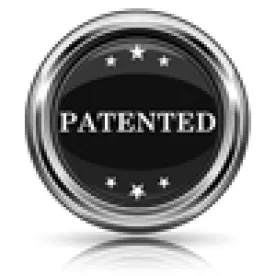Takeaway: A statement to combine references without articulated reasoning to do so is conclusory, and therefore insufficient to support an obviousness challenge.
In its Decision, the Board denied institution of inter partes review (IPR) of claims 1-10 of the ’494 patent.
According to the Board, the ’494 patent relates to “tissue allografts, and more particularly, ‘to placental membrane tissue grafts…and methods of preparing, preserving, and medical uses for the same.’” Petitioner challenged the patentability of the ’494 patent as follows: claims 9 and 10 as anticipated/obvious over Vishwakarma; claims 1-10 as obvious over Gray; claims 1-10 as obvious over Gray and Vishwakarma; claims 9 and 10 as obvious over Tseng and Miljudin; claims 1-10 as obvious over Hariri and Vishwakarma; and claims 3, 9, and 10 as obvious over Gray and Miljudin or Tseng.
Petitioner argued that “laminate” should mean layering or uniting two layers while the noun form would be understood as referring to the resulting product. Patent Owner argued that laminate should be construed as separated and washed amnion and/or chorion layers that are adhered together and that the specification supports this definition. The Board agreed with Patent Owner’s definition based on the specification. No other terms were challenged.
Turning to Petitioner’s anticipation/obviousness challenge of claims 9 and 10 over Vishwakarma, Petitioner argued that Vishwakarma discloses that after separation of placental tissue, the amnion is collected or submerged in saline and then laminated. Patent Owner argued that Vishwakarma does not disclose laminated amnion layers. Rather, in Vishwakarma, squares of amniotic membrane are “piled” on the glass mold and not directly adhered to one another. The Board agreed with Patent Owner, stating that Petitioner had not demonstrated that the layers of amnion are necessarily adhered to each other. Thus, the Board determined that Petitioner had not demonstrated a reasonable likelihood that Vishwakarma anticipates or renders obvious claims 9 and 10 of the ’494 patent.
Next Petitioner argued that claims 1-10 are obvious over Gray. Petitioner argued that despite Gray’s use of trypsin to remove an epithelial layer of cells, an ordinary artisan would have understood that trypsin would not be effective in removing fibroblasts embedded in a three-dimensional structure. Petitioner concluded that an ordinary artisan would have modified Gray to allow for retention of the epithelial cell layer, which would simplify and shorten processing of a graft. Patent Owner argued that Gray states the collagen tubes of the invention are processed such that “cellular material is substantially removed.” According to Patent Owner, an ordinary artisan would understand Gray to remove cells from amniotic and chorionic membranes. Further, Patent Owner argued that there is no motivation to modify Gray as suggested by Petitioner. The Board agreed with Patent Owner and concluded that Petitioner had failed to establish a reasonable likelihood that claims 1-10 are rendered obvious by Gray.
Petitioner argued that claims 1-10 are obvious over the combination of Vishwakarma and Gray. Petitioner asserted that Vishwakarma discloses the lamination and dehydration are viable with amnion that has not been decellularized. Petitioner alleged that combining the more substantial washing steps and treatment with a sterilant as disclosed by Gray with Vishwakarma would reduce the infection potential. Patent Owner argued that Petitioner failed to articulate a reason why one of ordinary skill would have combined Gray and Vishwakarma. The Board agreed with Patent Owner and determined that Petitioner had not established a reasonable likelihood that claims 1-10 are rendered obvious by the combination of Gray and Vishwakarma.
Regarding the challenge of claims 9 and 10 based on Tseng and Miljudin, Patent Owner argued that Petitioner failed to establish that Tseng and/or Miljudin teach a placental tissue graft in which the layers are directly laminated to one another. The Board noted that it has construed the term “laminated” as requiring that layers be adhered together. Thus, the Board stated that Petitioner had not established evidence that Tseng and/or Miljudin create a laminate by adhering the layers.
Petitioner’s challenge of claims 1-10 based on Hariri and Vishwakarma was also not well met by the Board. Petitioner asserted that Hariri alone renders the claims obvious because without a specific reason to decellularize, an ordinary artisan would have removed such a step. Petitioner argued that notwithstanding this argument, one of ordinary skill in the art would have used non-decelled placental tissue as disclosed by Vishwakarma. Patent Owner argued that Petitioner’s sole reason for combining the two references is to simplify processing by removing the decellularization step, which Petitioner characterizes as unnecessary. The Board branded as conclusory Petitioner’s contention that it would have been obvious to retain the cells layers in producing the placental graft of Hariri. Thus, the Board agreed with Patent Owner. The Board reached the same conclusion for Petitioner’s obviousness challenge of claims 3, 9, and 10 of the ’494 patent based on Gray, Miljudin and/or Tseng for the reasons discussed above.
TISSUE TRANSPLANT TECHNOLOGY LTD. & HUMAN BIOLOGICS OF TEXAS, LTD. v. MIMEDX GROUP, INC., IPR2015-00320
Paper 13: Denying Institution of Inter Partes Review
Dated: June 29, 2015
Patent 8,709,494
Before: Lora M. Green, Susan L. C. Mitchell, and Christopher G. Paulraj
Written by: Green
Related Proceedings: MiMedx Group, Inc. v. Tissue Transplant Technology Ltd. et al., Case No. 1:14-CV-719-HLH (W. D. Tex.); IPR2015-00420 (U.S. Patent No. 8,597,687 B2); IPR2015-00664 (U.S. Patent No. 8,372,437 B2); and IPR2015-00669 (U.S. Patent No. 8,323,701 B1)



 />i
/>i

